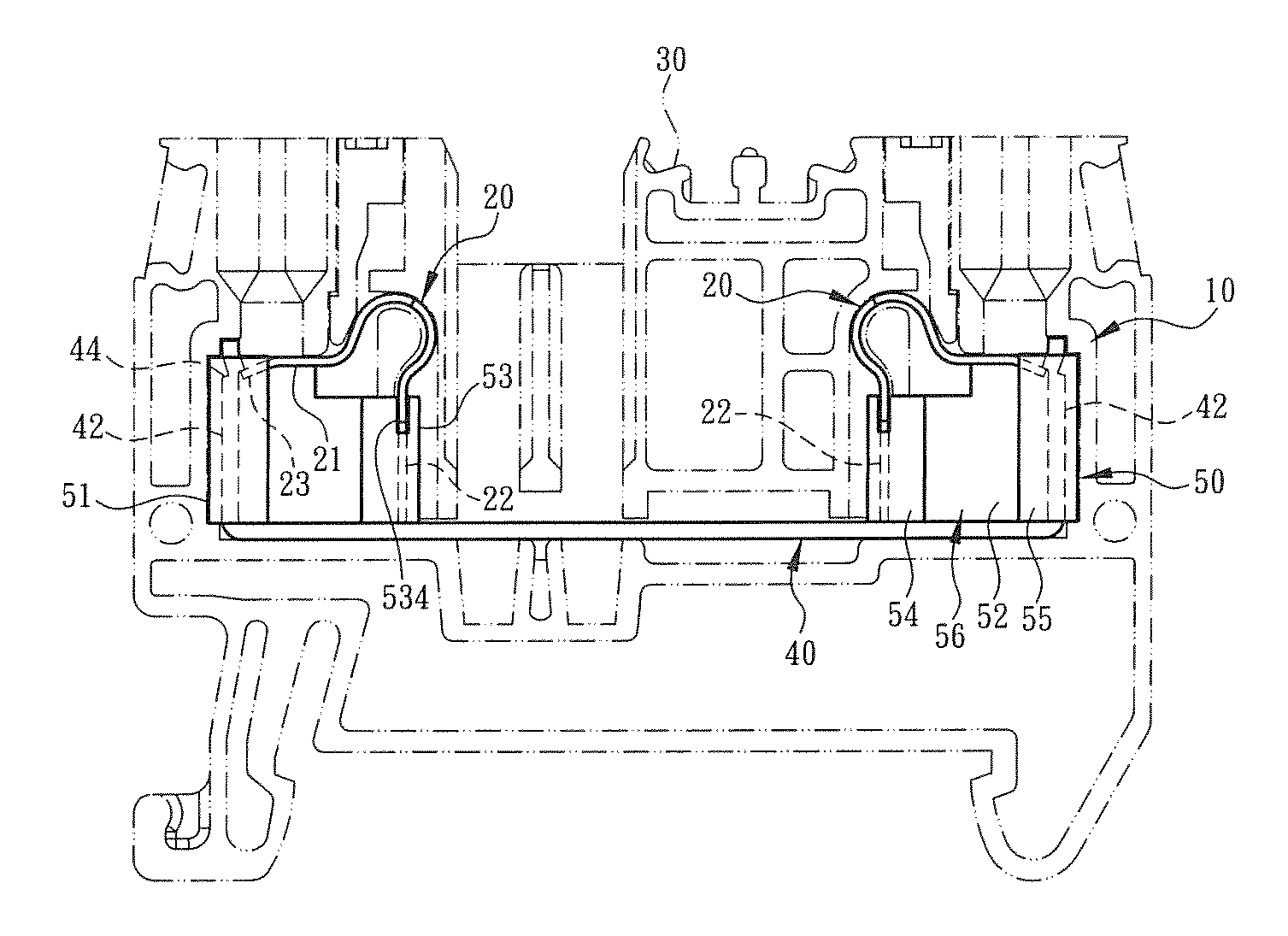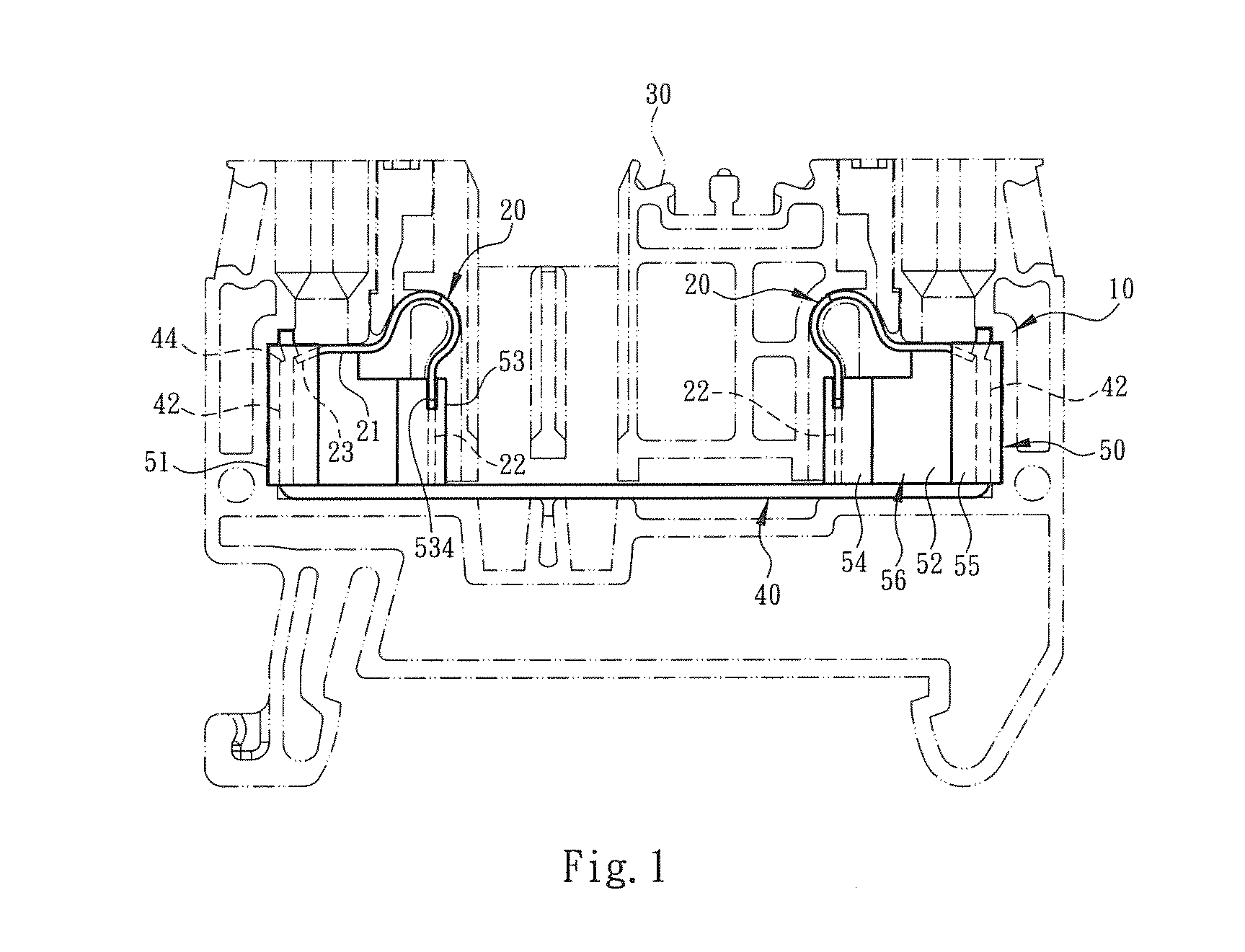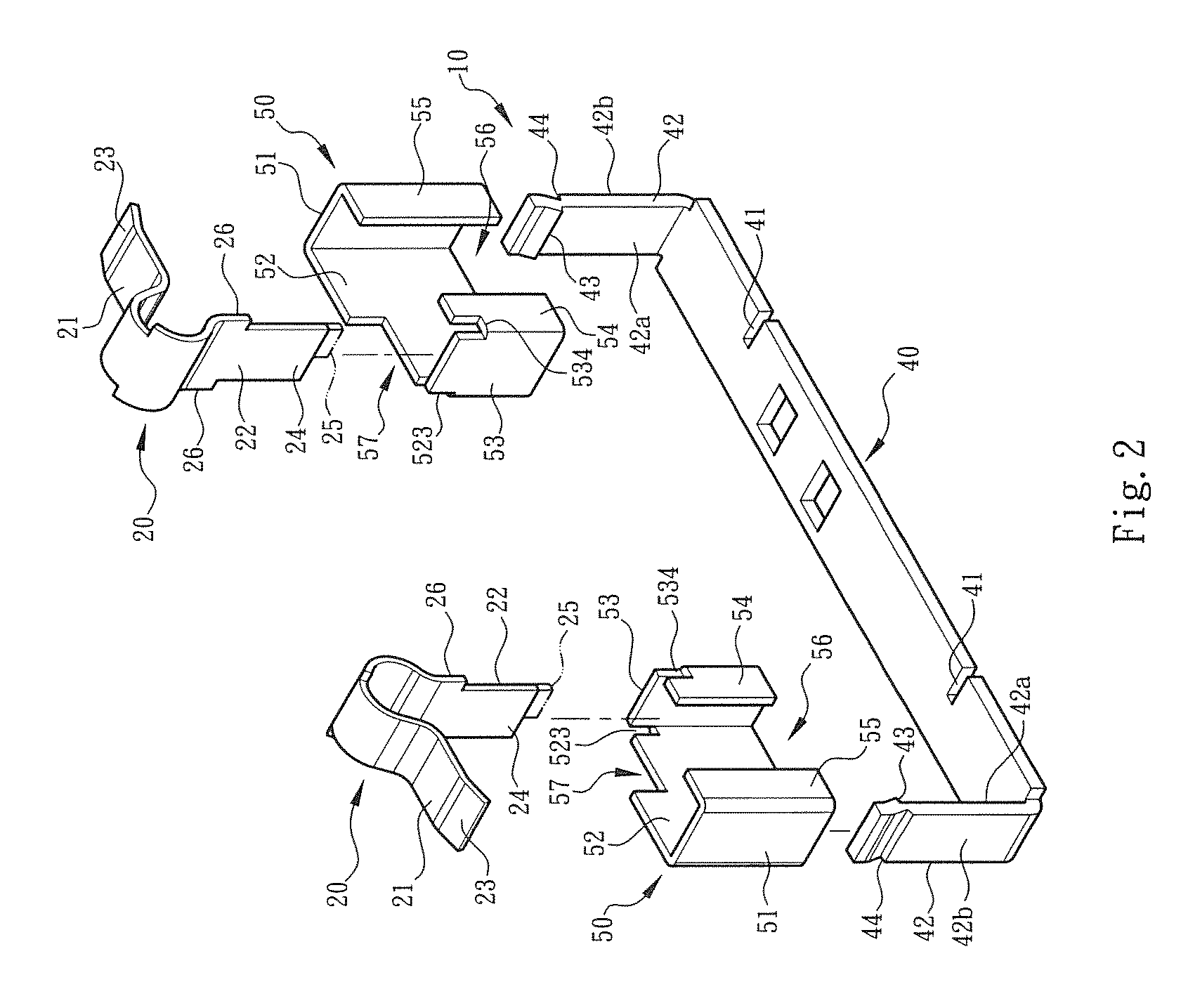Conductive wire connection structure of rail-type electrical terminal
a technology of electrical terminals and conductive wires, which is applied in the direction of connections, contact members penetrating/cutting insulation/cable strands, electrical apparatus, etc., can solve the problems of high production cost, high production cost, and low yield of conventional electrical connection terminals, so as to reduce waste material yield, enhance heat dissipation effect, and increase operational and motional stability
- Summary
- Abstract
- Description
- Claims
- Application Information
AI Technical Summary
Benefits of technology
Problems solved by technology
Method used
Image
Examples
Embodiment Construction
[0032]Please refer to FIGS. 1, 2 and 3. The conductive wire connection structure of rail-type electrical terminal of the present invention includes an assembly of a conductive support 10 and a metal leaf spring 20. The conductive support 10 and the metal leaf spring 20 are together mounted in an insulation case 30 for pivotally connecting with conductive wire and latching on a grounding rail (or conductive rail) to set up a common grounding device (not shown) for an electrical appliance or mechanical apparatus.
[0033]In a preferred embodiment, the conductive support 10 is divided into two parts, that is, a support main body 40 and a wire connector 50. The support main body 40 is selectively made of copper material with good electrical conductivity. The support main body 40 is formed with a notch 41 for assembling with the metal leaf spring 20. An arm section 42 perpendicularly extends from each of two ends of the support main body 40, whereby the support main body 40 has a U-shaped c...
PUM
 Login to View More
Login to View More Abstract
Description
Claims
Application Information
 Login to View More
Login to View More - R&D Engineer
- R&D Manager
- IP Professional
- Industry Leading Data Capabilities
- Powerful AI technology
- Patent DNA Extraction
Browse by: Latest US Patents, China's latest patents, Technical Efficacy Thesaurus, Application Domain, Technology Topic, Popular Technical Reports.
© 2024 PatSnap. All rights reserved.Legal|Privacy policy|Modern Slavery Act Transparency Statement|Sitemap|About US| Contact US: help@patsnap.com










